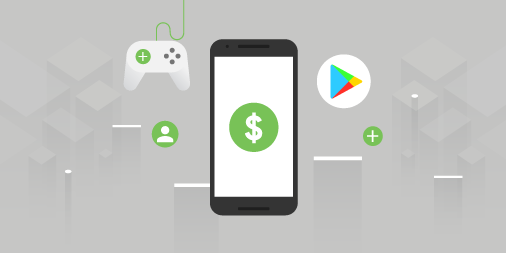
Every year the requirements for in-app subscriptions in mobile applications in the App Store and Google Play change, it becomes more and more difficult to take them into account the first time and not receive a series of rejections, thereby postponing the release sometimes for several months. If there are already a lot of publications about the requirements for the App Store (see here or here ), then sometimes questions arise with the rules of in-app subscriptions for Google Play.
We, the team from the Central Marketing Mail.ru Group, decided to understand this in more detail and share our recommendations for the implementation of in-app subscriptions. According to our observation, users often leave a large number of negative reviews (and, as a result, the rating of the application decreases), where they specify whether the amount will be charged for the full version of the product monthly or one-time, how to cancel the subscription, at what point the money will be charged, why money other similar questions continue to be written off. And support sometimes can not cope with the volume of requests at all.
And so, in April 2020, Google updated the requirements for paid in-app subscriptions and obliged any new apps or app updates published after April 16, 2020 to comply with the latest version of the Developer Program Rules . According to these rules, applications that were published before April 16, 2020 are given 60 days from this date to begin to comply with the new requirements, that is, until June 16, 2020.
We are confident that the new measurespaid in-app subscriptions on Google Play will help make the terms of service for the user more transparent, as well as build a more trusting relationship between the user and the developer. We have studied these requirements in detail, analyzed more than 100 random applications and want to share our experience and recommendations with our readers.
So let's get started:
- , in-app
, . : (.. «») in-app , , , — .
, in-app .

- in-app
, , . , , , $49 $4 .
, , $4, $49.
: — , — 1 12, .

- in-app
. , , , ( ) ( , ). , , , in-app . - in-app
, «». , Android «», in-app . , , .
, , .
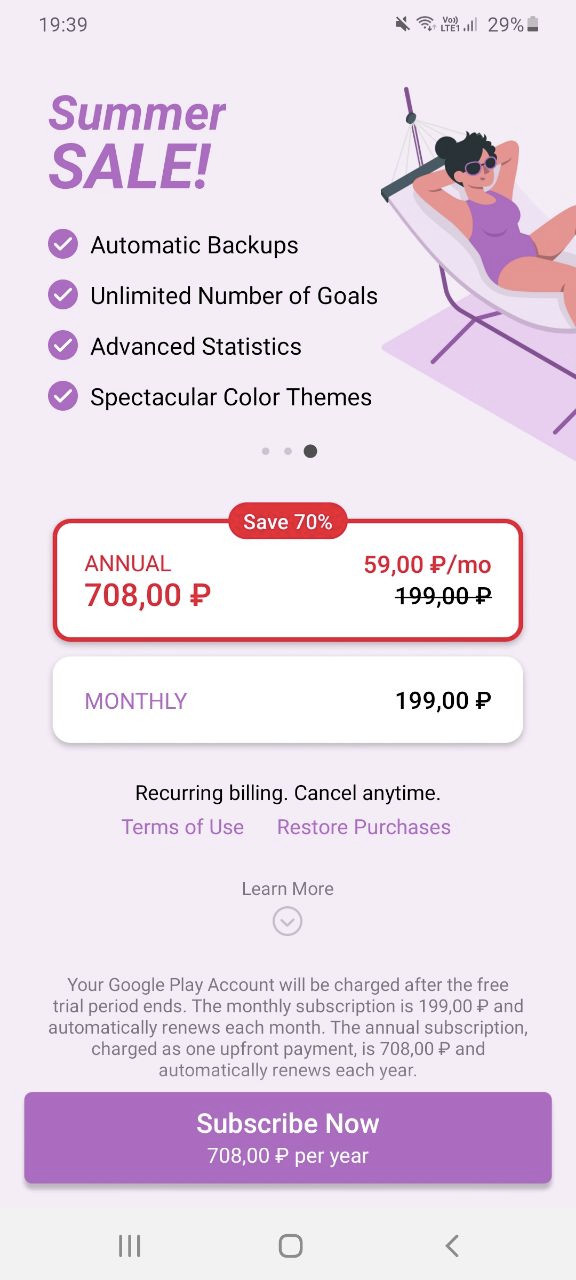
, «» «one-time» , . :
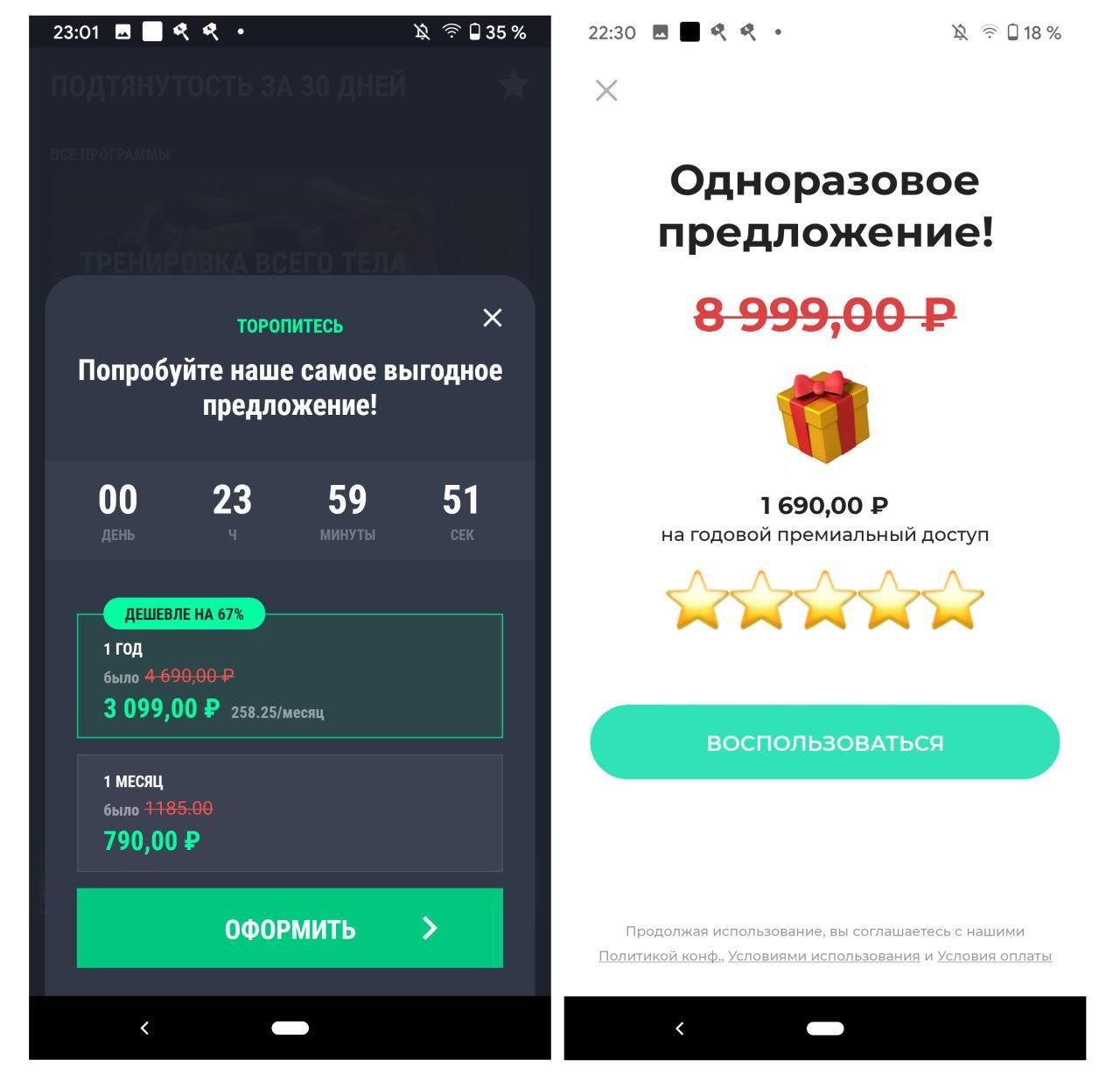
-
, , . , , , .
, « » - .
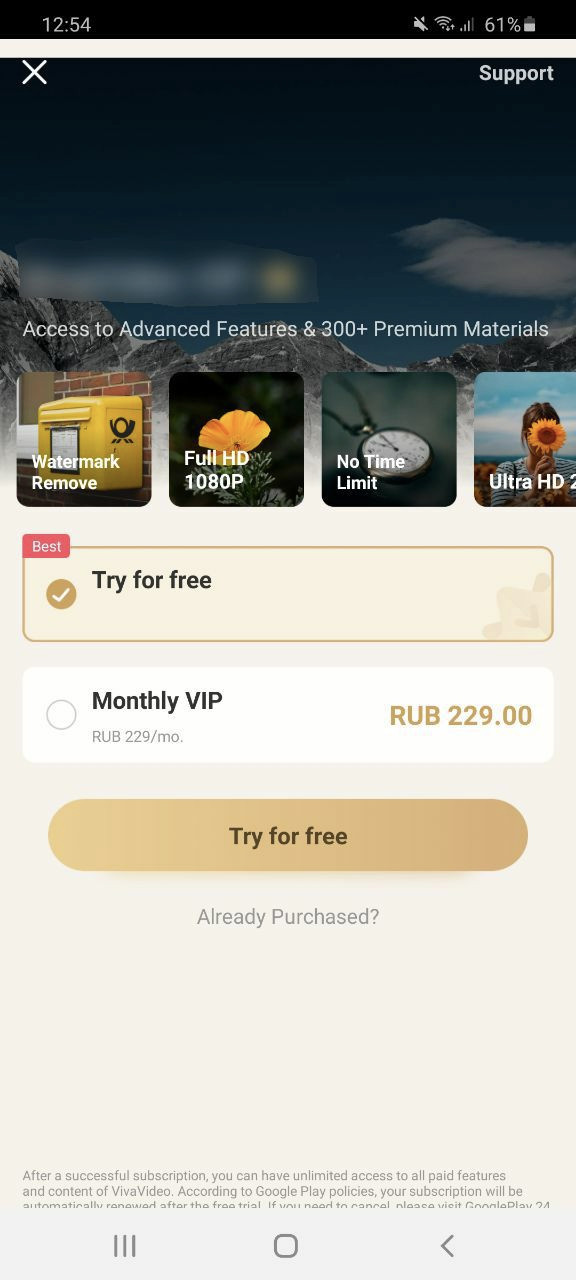
, UX- , , . , « ! 01/08», « » . - ? ,
, $4,99 , $1, . - in-app
, in-app . Google Play, in-app , . in-app . - ,
( , , ). , , .
, Google , in-app . , , , 3, 6 12 . , . - , ,
, in-app .
. 12 .
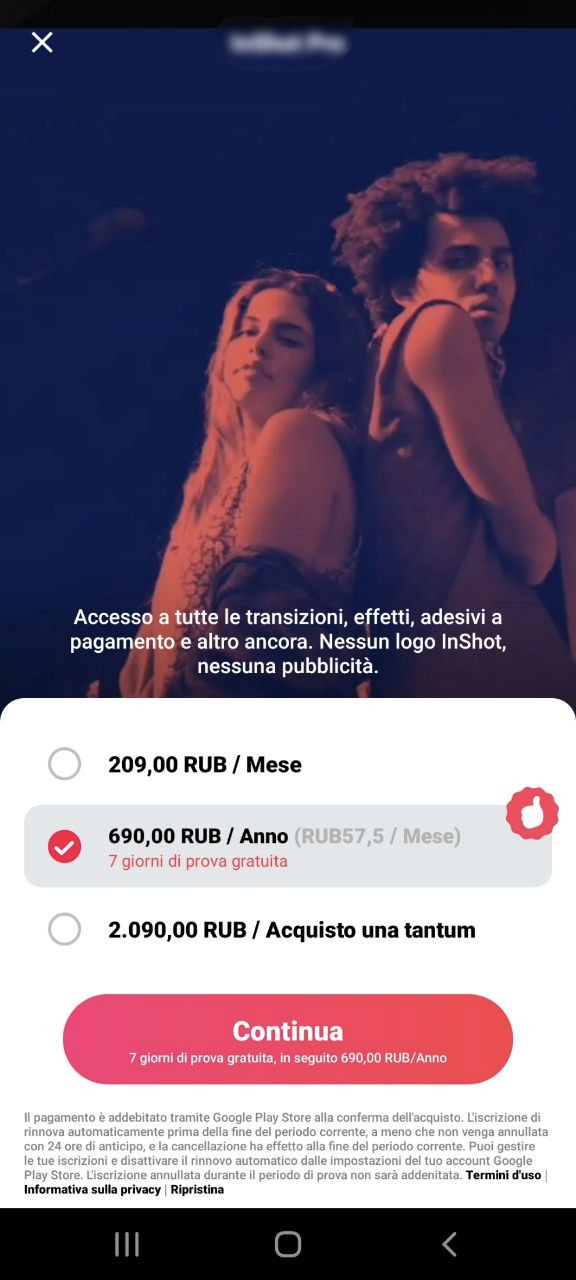
At first glance, it may seem that the updated policy and our recommendations may not play in favor of the developer, but if you look at it from the other side, in the long term, these measures can help build a more trusting relationship between the application developer and users, as clearly stated the information will raise awareness and help reduce in-app subscription cancellations. Moreover, the new measures could reduce the number of bad reviews due to misunderstandings of in-app purchases and increase the app's reputation in the eyes of users, which, in our opinion, could lead to more stable income.
Also, the developers haveseveral new optimization points for in-app subscriptions in the application. The ability to reduce the percentage of cancellation of subscriptions is already available thanks to the "benefits" option. If the user intends to cancel the payment, the user will see a screen listing the very benefits that the developer indicated in a special field in the product settings in the Google Play Console. In addition, it is possible to generate custom promotional codes for the extended version of the application. Unlike the current one-time promo codes, new promo codes can be activated by multiple users at once. This will allow marketing professionals to use custom promotional codes in advertising campaigns to more effectively attract users.
By the way, you can analyze the effectiveness of in-app subscriptions through modern analytics systems, for example, through the myTracker platform, where you can break down into trial subscriptions, repeated subscriptions, conversion, the number of subscription renewals, income from subscriptions in the context of attribution, and other metrics. Colleagues have prepared a guide that will tell you what aspects of the application you should focus on to increase your bottom line when working with subscriptions.
Be aware of all the changes aimed at optimizing in-app subscriptions in your product, and also carefully check the platform requirements before submitting a new version for moderation. This can help prevent rejections and thereby save time to start earning as early as possible, maintain a high app rating, and learn about new opportunities for growth, for example, through the above custom promo codes.
Success in monetization!
PS: Subscribe to our Telegram channel , where we share useful information about optimizing applications in the App Store and Google Play.